Food for the Soul: Guo Pei Exhibition — San Francisco
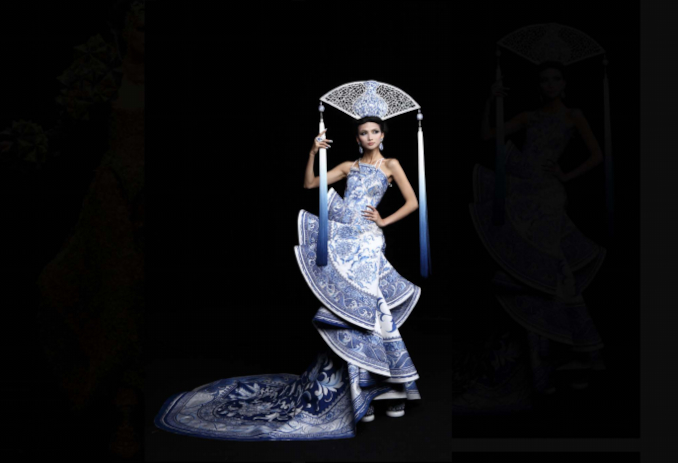
By Nina Heyn — Your Culture Scout
Art museums sometimes showcase outstanding fashion designs, often presenting historical collections of artists who long ago earned their place in the pantheon of couture. Over the last few years, I have seen Chanel, Galliano, and Yves St. Laurent retrospectives in Paris, an Alexander McQueen show that is currently at the Los Angeles County Museum of Art, and a display of Vivienne Westwood creations in Edinburgh. Even in this exclusive company of legendary couturiers, Guo Pei, a contemporary Chinese designer, is exceptional. Her show entitled “Guo Pei: Couture Fantasy,” recently mounted by the Legion of Honor Museum in San Francisco, goes beyond the simple presentation of high-fashion ideas.
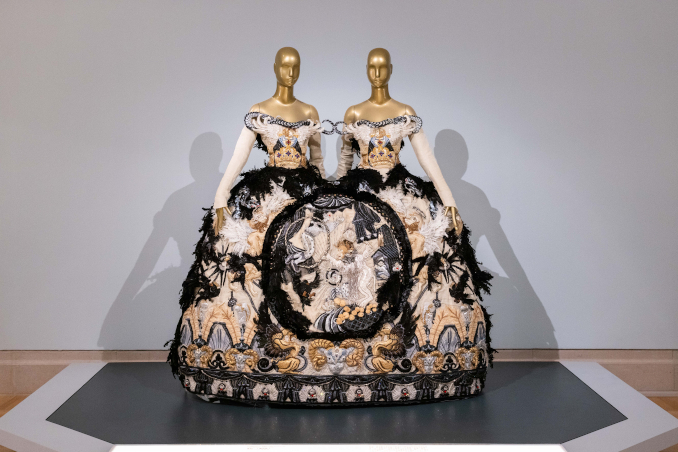
Born in 1967, Guo Pei (郭培) grew up during the Cultural Revolution, and even if her family—belonging to Beijing’s political cadres—was not exiled to reeducation camps, they still had to divest themselves of souvenirs, photos, and artwork connected to the old “bourgeois” past. To survive, all families had to break with the past—either destroying or hiding luxury items, pre-revolutionary family photos, or treasured items of clothing or jewelry previously passed down for generations. The revolutionary guards would denounce anyone who would not erase such links to the “old China.” This was the decade of visual austerity.
Little Guo Pei’s only connection to the past was through tales from her grandmother about life in the pre-1949 world, when luxury fabrics were signs of a family’s prosperity and not the lethally dangerous mark of “an enemy of the people.” However, times changed in China again. Guo grew up, eventually becoming one of the first graduates of New China’s fashion school. Paradoxically, within a couple of decades, she blossomed into a foremost designer for the new class of the ultra-rich and Western-oriented society in China and beyond.
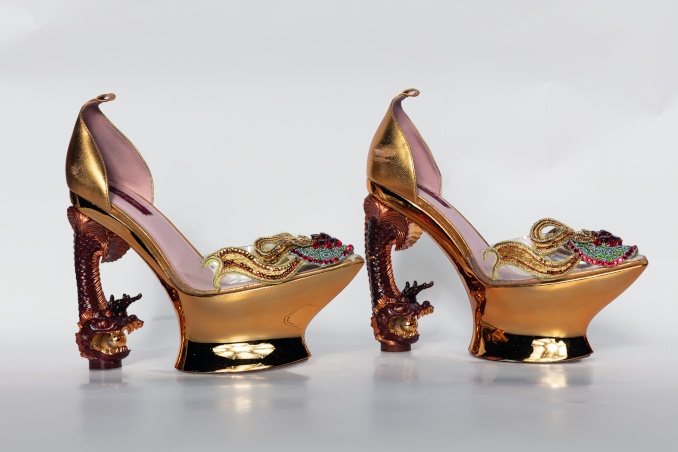
The Cultural Revolution (1966–1976) was a period when, for various and complex reasons, China’s leaders attempted to negate long-standing national values (such as respect for elders and veneration of material traditions) and destroy artifacts of the country’s cultural past. However, every action breeds a reaction. A lot of people who can remember that revolutionary decade went on to later develop a reaction of embracing luxury and material excess. There are now generations of mainland Chinese who started to pursue conspicuous consumption once it became socially accepted. It feels like Guo Pei’s extravagant designs, which amplify elements of historical Chinese art and fashion, may, in a way, be the artist’s (and the nation’s) reaction to the austerity of the past.

Successful as she was in building her atelier in China and developing her style, Guo Pei did not visit Paris—the center of haute couture—until the turn of this century. Once she did, and especially when she started exhibiting in Paris shows, she started to translate her newfound fascination with old European architecture (anything from Gothic cathedrals to the Eiffel Tower), stained-glass windows, and rococo dresses into her own fantastical re-imagining of these forms.
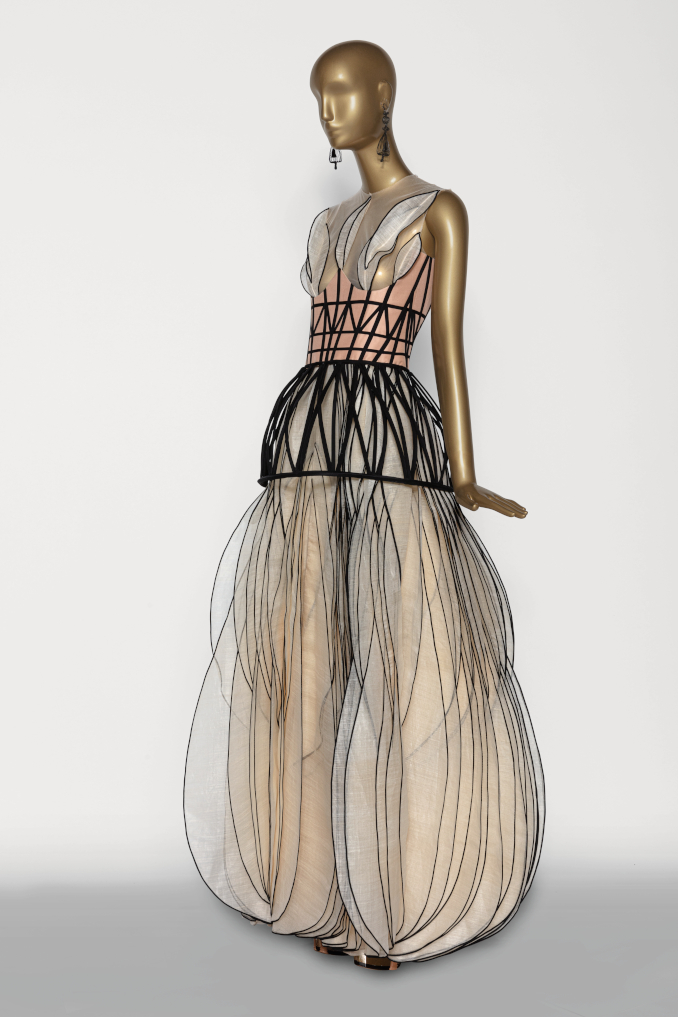
A 2018 show in Paris, titled L’Architecture, allowed Guo Pei to present ideas such as dresses with a corset rendered in black and put on top of the dress rather than underneath.
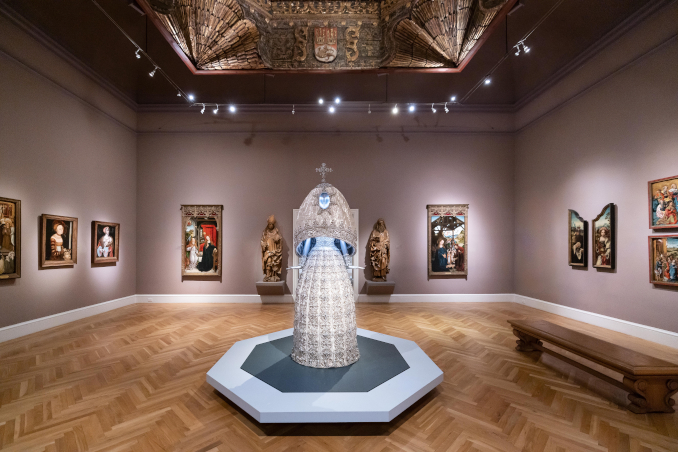
At the Legion of Honor exhibition, there are examples of dresses that are inspired by cathedral windows, garments that use a new technology of screening old paintings onto fabrics, and gowns that evoke the steel constructions of the 1900s. Guo Pei’s fascination with her discovery of iconography of European architecture, religious icons, and decoration—as exemplified by Parisian landmarks—became re-imagined in her creations, unconstrained by the European traditions and religion that would inform any European artist.
For this artist, inspiration from Western architecture or French Rococo gowns is just that—inspiration. The lifeblood of her creativity, in her own words, is the wealth of Chinese tradition: “The culture of China is like the blood that runs through my veins, it’s my life.“
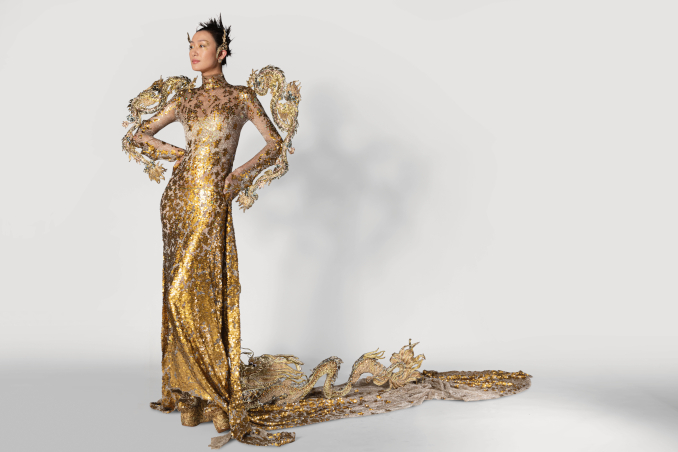
By her own admission, the designer has been continuously drawing from the traditional embroidery and silk weave designs that have been in the service of art, trade, decoration, and signs of social status and religion for thousands of years in China. The art of embroidery was widely taught to girls until the 1949 revolution, and it is still practiced daily among the minorities in the central and southern provinces. The art of silk weaving is as old as China itself (traces of silk thread found in ancient tombs are over 8,000 years old). The intricate system of colors, patterns, and symbols (for example, dragons for luck, cypresses for longevity, qilin beasts for wisdom, or peaches with bats for longevity and blessings) has guided social rankings and commemoration of religious and family occasions for millennia. The trove of past iconography, much of it destroyed by the numerous wars and revolutions of the last two centuries, is the source of Guo Pei’s inspiration to create her intricate gowns, head pieces, accessories, and coats.
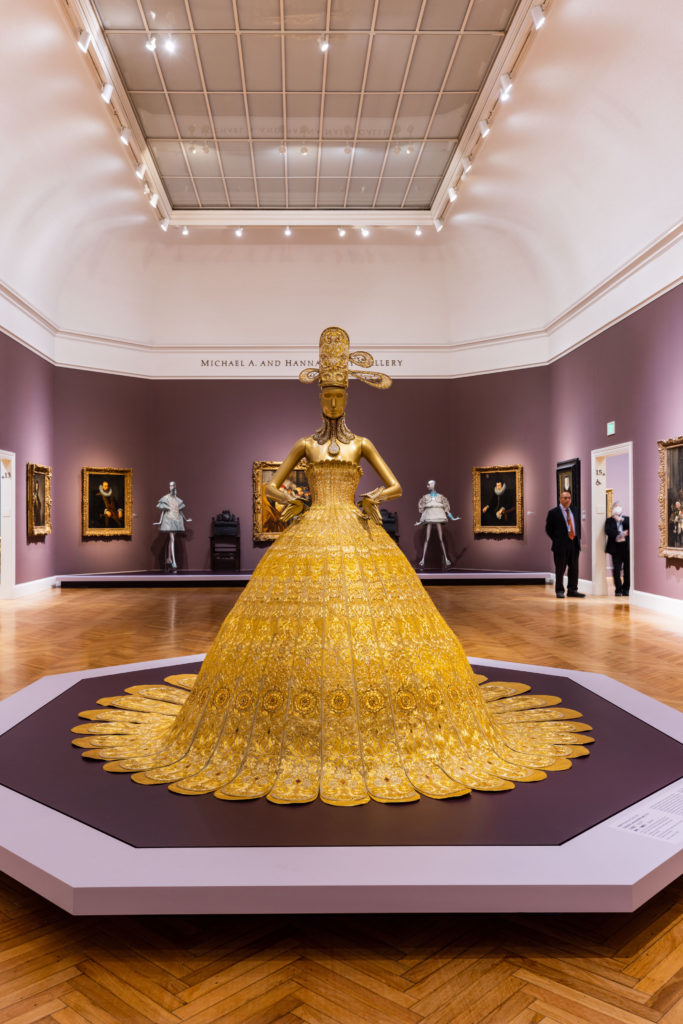
Guo Pei has designed some pieces for maximum impact. One of her first haute couture pieces, the “Magnificent Gold” dress, is a case in point. It took 50,000 hours, $1 million, and two years of work by embroiderers and seamstresses to create. Its design evokes Chinese imperial officials’ attire from the sumptuous periods of the late Ming and early Qing dynasties. The headdress and the scalloped pleats of the dress are inspired by the shape of futou hats, while the very specific mid-range deep-yellow gold of the embroidery is the hue that for centuries was reserved for the emperor’s clothes (royal sons and their wives would, for example, only be allowed a different, orangey shade called “golden yellow”—jin huang 金黄). At the same time, there are echoes in this creation of the golden decorations of Versailles—East meets West in this “sun” dress.
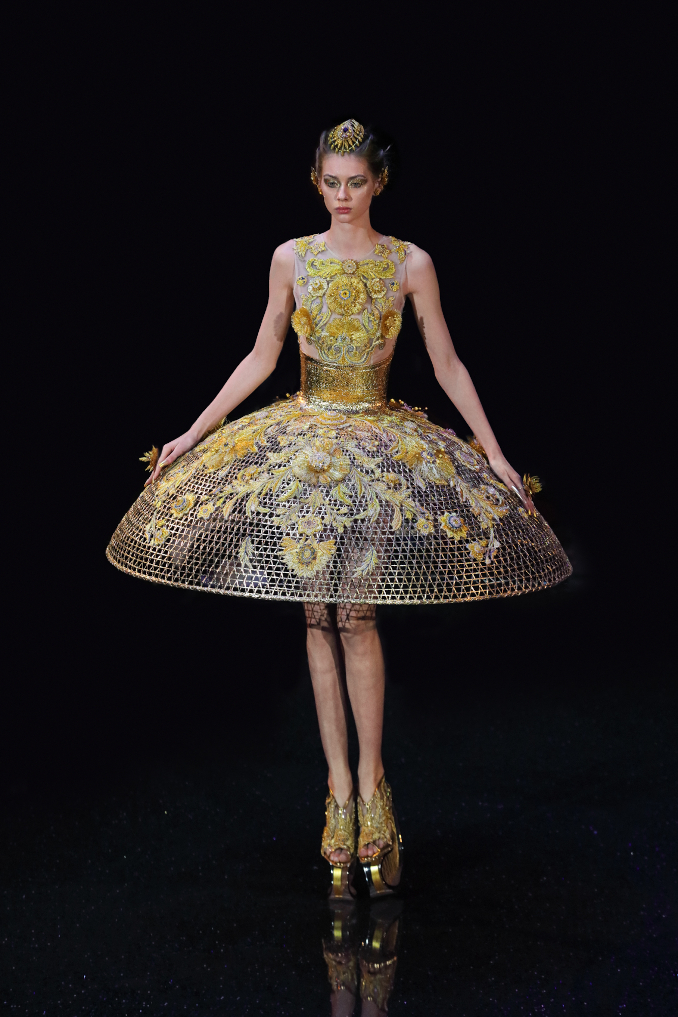
The dress above echoes a Qing dynasty coronet hat (also known as a “Phoenix crown”) that would have been worn by mandarin wives on formal occasions. This very specific headpiece of symbolic ornaments mounted on a semi-sphere of wire net is translated in Guo Pei’s hands into a gold dress that evokes at the same time imperial court headgear as well as a Louis XV crinoline gown or maybe even Victorian architecture. All of these elements meld in the artist’s hands into one astounding avant-garde dress.
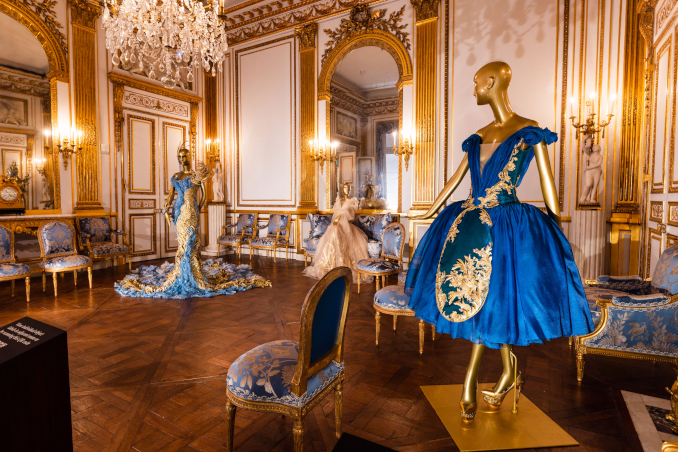
Guo Pei’s creations, showcased at the fashion shows of Paris and Milan catwalks, feel equally at home in a museum. Her incredibly elaborate embroideries, resplendent appliqués, and fantasy headdresses and shoes have crossed over from mere fashion statements, which are by their nature ephemeral, into something much more permanent and inspiring. The artist herself has expressed it this way: ”The traditional craftsmanship in my work provides a connection with history. It give the work a much deeper legacy—a sense of inheritance of the times past, and it carrying it forward. In the future I hope that people will see it as a footprint of human memory.” Future is promised to none, people or objects, but Guo Pei’s creations have already crossed over from “just” fashion into the land of fine art.
The exhibition “Guo Pei: Couture Fantasy” at the Legion of Honor Museum in San Francisco has just been extended to run through November 27, 2022.
